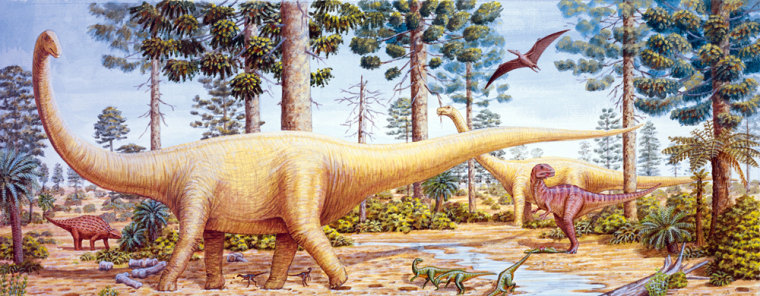Scientists unveiled bones Thursday from two 82-foot (25-meter) behemoths they said were the largest dinosaurs ever found in Australia.
Fossilized bones from the two titanosaurs were found in 2005 and 2006 by ranchers near the town of Eromanga, 620 miles (1,000 kilometers) west of the Queensland state capital, Brisbane.
They were put on display for the first time at the Queensland Museum on Thursday after a long period of excavation and scientific identification.
"These are the largest bones ever discovered in Australia," museum curator Scott Hocknull told reporters. The biggest of the bones — a humerus, from a foreleg — measures 5 feet (1.5 meters) long and weighs 220 pounds (100 kilograms).
"They would have been about two buses in length," Hocknull said of the animals.
Titanosaurs are among the largest of the prehistoric animals known as sauropods — long-necked, long-tailed plant-eating dinosaurs that existed during the Jurassic and Early Cretaceous periods between 100 and 200 million years ago. Their bones are found all over the world.
Hocknull said the two recent finds — nicknamed Cooper and George — indicated the animals were about 23 feet (7 meters) longer than the previous biggest reported titanosaur whose remains were found in Australia, also in Queensland in 1999.
Rancher Stuart Mackenzie said he stumbled across the first bone while mustering cattle on a motorbike on his property two years ago.
"The very first bone we found was the most exciting because until you actually have it verified by the museum you don't actually know you've got a bone, you just think it's a rock," Mackenzie said.
"From then on it's just ballooned ... we've found more sites and then we've stumbled across this one, and it was the daddy of them all," he said, referring to the humerus find.
